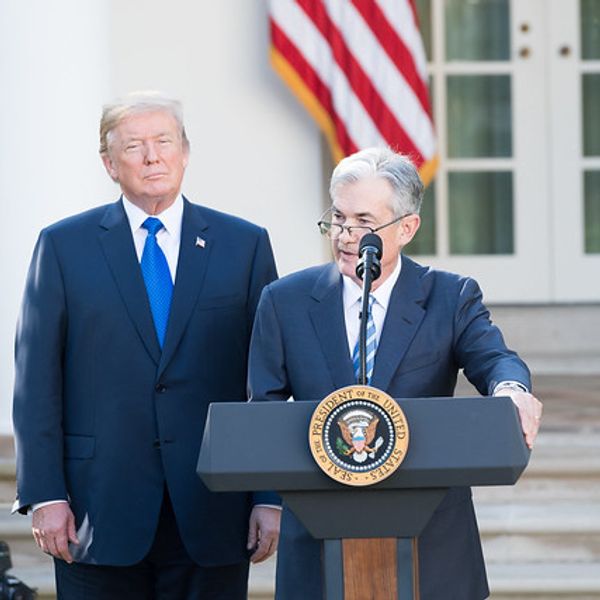
The president didn’t just lay out specific policies that will benefit women. He also shifted the theory of how government can help them.
The State of the Union address is inherently a political exercise, intended to chart a course for governing but also to let important constituencies know that they are heard and valued. On Tuesday night, President Obama seemed intent on sounding down-to-earth, sensible, unthreatening, and easy to understand. He presented a long list of concrete proposals as if there couldn’t be any disagreement over their merits.
For women, a critical voting bloc that helped deliver his second term, the president checked off many important boxes. He spoke about ending violence against women, guaranteeing them equal pay, preventing teen pregnancy, providing working families with more daycare and early-childhood education, and promoting military women in combat roles. He also acknowledged that women around the world are drivers of prosperity and must be empowered if we hope to reduce global poverty and secure emerging democracies.
Hearing this litany of familiar issues was reassuring, but the overall theme of the speech provided an even more important takeaway. Without much fanfare, the president put forward a reshaped agenda for government programs that are, as he put it, not “bigger,” but “smarter.” This is vital for women because it would have the government target policies and marshal resources for women and families, which, in turn, prevent larger and costlier social and economic problems. It’s a welcome departure from forgetting about women and children and waiting around to address the unfortunate consequences after the fact.
No grand principles were enunciated. But the president craftily put forward a theory of change that emphasizes strategic and comprehensive investments and interventions to establish a floor of well being for at-risk women and families.
—He called on the House of Representatives to follow the Senate’s lead and reauthorize the Violence Against Women Act, not just as a moral imperative but because studies since its passage demonstrate the effectiveness of the social services and criminal justice reforms this pioneering legislation funds. Over two decades, rates of intimate partner violence and homicides have decreased dramatically, as the White House recently reported.
—He called for expanding mandatory and free early-childhood education – currently available to only 3 in 10 American children – not just because it’s the right thing to do for hard-pressed parents, but because the data shows that it also boosts graduation rates, decreases teen pregnancy, and even correlates with palpable reductions in violent crime in communities across the country.
—He promised to fight to increase the minimum wage and pass the Paycheck Fairness Act. This would close a real gender earnings gap. It would also benefit the nearly two-thirds of all minimum wage workers who are female, many of them single heads of households who can’t possibly lift their families out of poverty without this critical and long overdue intervention. Small businesses have long opposed a raise, despite studies that demonstrate a return to employers through increased productivity.
—He mentioned the Affordable Care Act only in passing, but it too provides many additional preventive policies, which, as he noted, are already improving services while driving down health care costs overall. For example, the ACA has already brought comprehensive, affordable family planning and reproductive health care to more than a million women. By 2016, it could extend those services to as many as 13 million additional uninsured women if the many state challenges to contraceptive coverage and the Medicaid expansion do not undermine its potential reach and impact. And here again, as we have written previously, data demonstrates incontrovertibly that these services will dramatically reduce rates of unintended pregnancy and abortion.
—While the focus of the president’s speech was primarily domestic, he also mentioned America’s responsibilities in the world and obliquely referenced the signature efforts of his administration to mainstream gender considerations into our diplomatic, defense, and development policies. Under the president and former Secretary of State Hillary Clinton, the United States has joined 30 other countries in adopting a National Action Plan on Women, Peace, and Security, facilitated by the United Nations, which applies gender considerations and disaggregates spending across all agencies to require focused investment to improve the status of women. The government recognizes that this is not just the right thing to do, but also the smarter course if our aim is to meet the security and development challenges of our foreign policy. This shift in thinking lies behind the decision to promote military women to combat rank, for example, because in conflicts that involve civilian populations, as in Afghanistan and Iraq, female officers on the front lines have played critical roles in connecting with local populations. And local women empowered by the U.S. presence have in turn become important agents in post-conflict resolution and peace processes and in relief and reconstruction efforts.
The president’s State of the Union provided a blueprint for a strong, positive government obligation to secure the well-being of women and families at home and abroad. Not a lot of detail was offered, nor was there any fancy philosophical framework for what would represent a palpable shift in U.S. priorities and our traditional ways of governing. He spoke as if this was all pretty much just common sense – the better part of wisdom.
But certainly if Senator Marco Rubio’s response is any indication, the president’s intentions, however masked in straightforward, anodyne rhetoric, face innumerable obstacles to their realization. That should not, however, stop us from applauding and getting behind the potential for meaningful policy change.
Ellen Chesler and Andrea Flynn are Fellows at the Roosevelt Institute.
Cross-posted from the Roosevelt Institute’s Next New DealBlog
The Roosevelt Institute is a non-profit organization devoted to carrying forward the legacy and values of Franklin and Eleanor Roosevelt.
Photo credit: Official White House Photo by Chuck Kennedy








